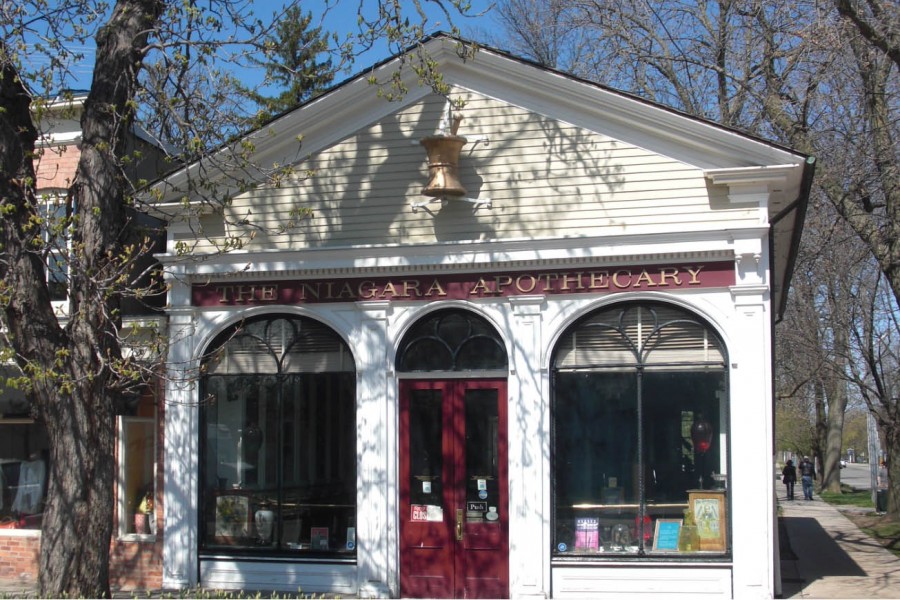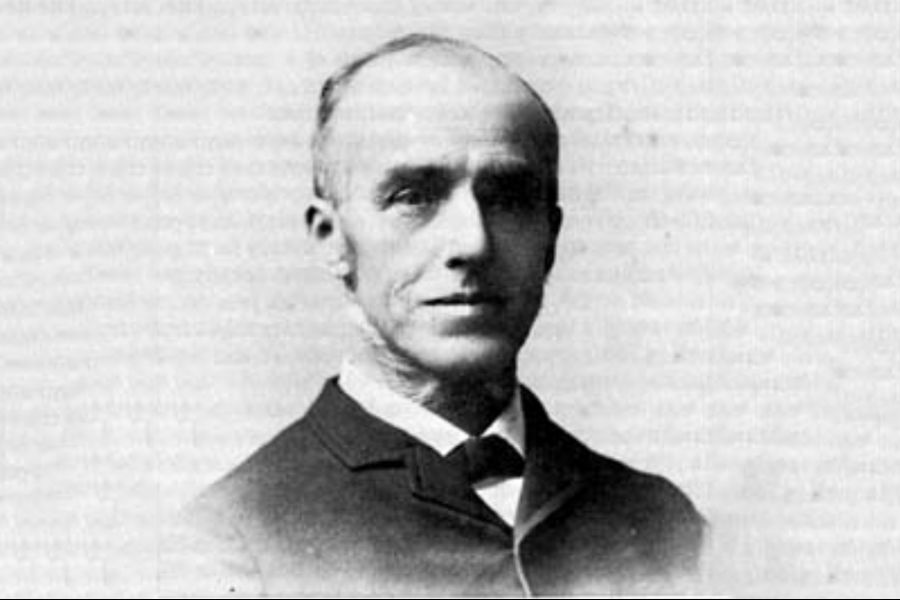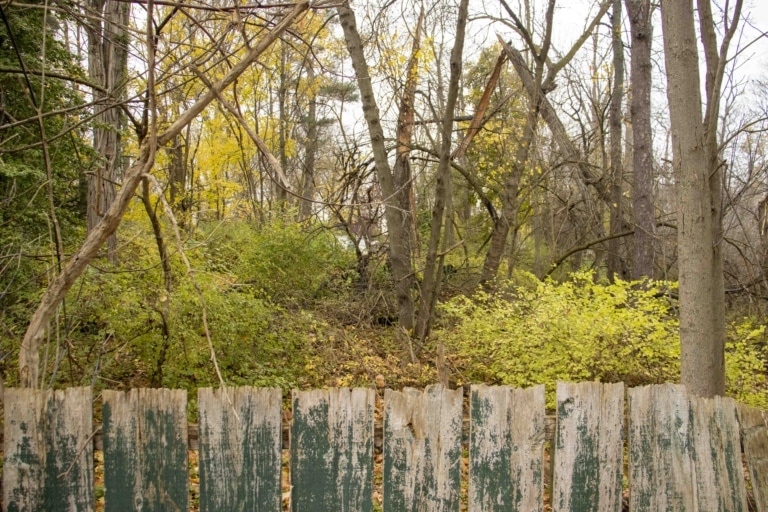Henry Paffard was Lord Mayor of Niagara-on-the-Lake for 26 years. He served three terms in office: 1863-1874, 1875-1880 and 1888-1896 — terms that came with a great many difficulties.
After the completion of Court House on Queen Street left the town with a $50,000 debt in 1864, a decision was made by the Niagara County to move the municipal government offices and court house to St. Catharines.
As a result, many businesses closed or left town.
Later, trying for some recovery of businesses, Pafford had the town invest in the Erie and Ontario Railway Company, which built a railway line from Fort Erie to NOTL.
Although this did create an influx of business, the rail company went bankrupt causing the town to sink further in debt.
In 1874, Ontario Legislature finally passed an act relieving the town of $14,000 of debt.
Paffard’s handling of these affairs, as well as some clever sales of surplus town properties, must have satisfied the town’s people for he was voted into office as mayor for two more terms.
Paffard was not just mayor, but a great philanthropist for the town. He served for forty-five years as an officer of the public library (first called the Mechanics Institute) and served ten years as vice-president of the Historical Society.
He also supported the creation of the local fire department and was an enthusiastic and successful horticulturalist, being said to have supplied fresh figs, from his own garden, for the Duke of York (later King George V) during his royal visit to Niagara on the Lake in 1901.
It was with Paffard’s persistence and dedication that we enjoy all the fabulous trees in Simcoe Park, on our old town residential streets and the avenue of trees on the Commons.
Paffard was a forward thinker when it came to education and campaigned successfully to provide education for all. In 1869, on a motion made by William Kirby (a town councillor) and seconded by Paffard, the motion received approval and girls were admitted to the NOTL grammar school for the very first time.
Then we have Paffard the private businessman.
Paffard became the town’s pharmacist when, in 1851, he took over the practice of James Harvey, the town’s only pharmacist, after his death.
It is said that Paffard had been Harvey’s apprentice for many years.
One year later, Paffard purchased the pharmacy business from Harvey’s widow and moved its location from Prideaux Street to the Paffard business block on Queen Street, just a few buildings away from the present day apothecary.
In 1868, Paffard purchased the building on the corner of King and Queen Streets from a lawyer named E.C. Campbell and established an apothecary, which can still be visited today.
Paffard did extensive renovations on the building prior to moving. He extended the building to the street line, lowered the floor to the street level and raised the ceiling inside.
Inside, the counters were made of black walnut, with a dispensing unit of elaborately carved butternut wood from a Toronto cabinet making firm. The mixing counter was white marble.
The ceiling had gilded plaster medallions, where hung elaborate crystal chandeliers, better known as “gasoliers” as they were lit by a gas generator that was located in the basement of the building. In later years, the chandeliers were wired for electricity.
The exterior of the building was just as meticulously designed. There were large arched windows with wooden twisted rope treatment. A local tinsmith crafted a large golden mortar and pestle above the doorway, still present today. The famous historical reconstruction architect, Peter Stokes, described the restoration as “mid-Victorian Eclectic.”
The name, The Niagara Apothecary at the Sign of the Golden Mortar, was kept by all of the six pharmacist/owners who operated the apothecary for almost 150 years.
During the days when pharmacists developed their own remedies for the sick, they sold many other products in their store too. Early pictures of the Niagara Apothecary show advertisements for tobacco, Kodak film developing, candies, postcards and even the sale of gasoline — so our drugstores of today are not providing anything new when you buy that box of chocolates or a birthday card.
The Niagara Apothecary had a wonderful public archeological dig this past summer of 2017, sponsored by the Ontario Heritage Trust. The dig lasted five weeks and saw many local volunteers help out.
Some volunteers were in the “pits” scraping and brushing away layers of dirt looking for a hidden treasure, some were at the NOTL museum, washing and cataloguing the artifacts and other volunteers were at the site providing information to all visitors who stopped to watch the progress of the archeologists.
Colourful bottles (some intact), coins and military buttons were just some of the artifacts that were found. Several old bottles still held pills or powder in them. One pill was identified as a stomach elixir and another that held red powder turned out to be paint. Many of these artifacts are now on display in the Niagara Apothecary, which is now a museum.
Paffard, upon his retirement in 1898, sold the apothecary to John D.W. Randall. From 1852 through to 1965, there was a succession of pharmacists operating on the premises of the Niagara Apothecary.
The death of the last pharmacist, Erland William Field in 1965, saw the apothecary shop permanently closed.
Paffard left NOTL after his retirement from public and private sector and moved west to Lumsden, Saskatchewan. He died in 1912 at the age of 88 and is buried in St. Mark’s cemetery.
Although his grave marker and that of his wife are quite unremarkable, the town has found ways to honour this gentleman.
Paffard Street in NOTL is named after him and there is a plaque on the old court house from the Niagara Historical Society in his honour.
The inscription sums up the man who was Henry Paffard – “In grateful memory of Henry Paffard, 1924-1912. For 26 years Mayor of Niagara, 45 years an officer of the Public Library and 10 years Vice President of the Historical Society, and one to whose good taste and energy we owe the beautiful trees on our streets and in our park.”

____________________________________
To learn more about the topic of this story you can visit the Niagara Historical Society & Museum website at, niagarahistorical.museum.ca, or visit the museum for yourself.
The Niagara Historical Museum is located at 43 Castlereagh Street, Niagara-on-the-Lake in Memorial Hall.
Visit, or give them a call at 905-468-3912.
Denise’s full profile can be found here.











